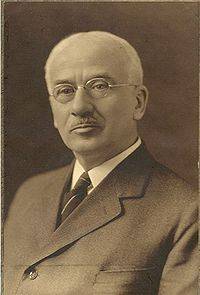Illinois
Number of victims
The only known victim of sterilization was a prisoner who in 1916 was given the choice of going to prison for the crime that he was convicted of or being sterilized. Eugenicist Harry Laughlin simply put it this way: “The prisoner was a pervert and a degenerate, and he decided to get sterilized” (quoted in Paul, p. 577). The judge offered the 65 year old man the opeartion, and reported the sentencing decision, in order to spark public reaction and dialogue about eugenic sterilization in Illinois, which was effective, but did not result in a sterilization law (Laughlin, pp. 354-355). According to Julius Paul (p. 577), this is the only reported sterilization case in Illinois.
Period during which sterilizations occurred
There
were no sterilizations except for the above case in 1916.
Temporal pattern of sterilizations and rate of sterilization
Illinois
neither authorized nor legalized eugenic sterilizations (Paul, p. 577).
Passage of law(s)
No sterilization laws were passed in Illinois. However, in December 1915 a bill for the Commitment and Care for the Feeble-minded Persons was drafted, subsequent to which Illinois House Bill 655 was passed, which allowed courts to permanently institutionalize anyone whom a respectable expert deemed feebleminded. House Bill 654 granted state officials the power to create institutions for such persons. Initially, the bills received considerable support.
Groups identified in the law
House
Bill 654 (eugenic commitment) pertained to the “feebleminded” (Rembis 2003,
p. 91) who were a danger to the community and unable to either
manage "himself and his affairs or of being taught to do so"
(Curtis, p. 156).
Process of the Law
According
to Bill 655, anyone that experts considered to be “feebleminded” could
be
permanently institutionalized. A petition would be
made, claiming the person was feebleminded and a danger to the
community. Then the petitioned person was granted a court hearing
in which two physicians (or a physician and psychologist)
would report the results of their examination of the person to
the court, which would decide whether the person was in need of
supervision (Curtis, p. 156). The law provided for the discharge
of patients if their condition changed, but the process was
difficult, reflecting views that feeblemindedness was a permanent
condition (Curtis, p. 157).
Precipitating factors and processes
Both
male and female reformers in Illinois were willing to experiment with
various
modern state- sponsored social measures, which led to the adoption of
the
eugenic commitment law. Reformers
viewed
the law as way to use science to better society (Rembis 2003, p. 14) and
drew
support from middle class white women who took it upon themselves to do
what
they thought was best as “universal mothers” (Rembis 2003, p. 40). To them
and
many men, eugenics seemed like a simple solution to a more complex
social
problem (Rembis 2003, p. 73). To
eugenic reformers,
institutions seemed to make the most sense because they thought these
institutions would provide care for people who could not care for
themselves and
therefore improve society as a whole (Rembis 2003, p. 39).
Groups targeted and victimized
The
law targeted young women whose delinquent acts were viewed as sexual
transgressions (Rembis 2003, p. 91). For example, fourteen-year-old Elsie
Strubble
was sent to the Cook County Juvenile Court from the Chicago Detention
Home
because she had been raped by one man and three boys and consequently
termed
“incorrigible.” A judge stated that Strubble was a “high-grade
feeble-minded
girl” and in 1924 recommended that she be sent to the Chicago Home for
Girls
(Rembis 2003, p. 90).
Major Proponents
Alfred
E. Walker was a reformer who supported the eugenic commitment law. She
thought
the law would help improve the lives of the state’s unfortunate
individuals. Walker
was chairman of the Legislative Committee of the IFWC (the Illinois
Federation
of Women’s Clubs). Walker was also a member of the committee that
helped create
the original eugenic commitment bill.
In
May 1915, Walker proposed that the IFWC unite on a single way to
provide care
for Illinois’ feebleminded (Rembis 2003, p. 42).
 (Photo origin: Wikipedia.com; available at http://en.wikipedia.org/wiki/Edward_C._Hayes)
(Photo origin: Wikipedia.com; available at http://en.wikipedia.org/wiki/Edward_C._Hayes)
As
Historian Michael Rembis has pointed out, Edward C. Hayes, a founder
and
president of the American Sociological Association, and then a
professor at the Univeristy of
Illinois, urged people to continue to support the use of eugenics to
eliminate
many of the state’s social ills including feeblemindedness (Rembis 2003,
p. 10). In his textbook Introduction to
the Study of Sociology (1916), Hayes wrote that “though
natural selection
no longer gives us a highly selective death rate, eugenics may do
something
toward giving us a selective birth rate (p. 576). He
also used the term “breeding up the human
herd” in approving of the state’s plans (quoted in Rembis 2003, p.
10). He believed feeblemindedness was a result of
both heredity and environment, but he also believed eugenics was the
solution to both (Rembis 2003, p. 54).
Bibliography
Curtis, Patrick A. 1985. "Eugenic Reformers, Cultural Perceptions of Dependent Populations, and the Care of the Feebleminded in Illinois, 1909-1920." Ph.D. Dissertation, Dept. of Social Work, University of Illinois at Chicago, 1983.
Hayes,
Edward Carey. 1916. Introduction
to the Study of Sociology.
New York: D. Appleton and Company.
Paul, Julius. 1965. "'Three Generations of Imbeciles Are Enough': State Eugenic Sterilization Laws in American Thought and Practice." Unpublished ms. Washington, D.C.: Walter Reed Army Institute of Research.
Rembis,
Michael A. 2002. “Breeding up the Human Herd: Gender, Power, and
the Creation of the Country's First Eugenic
Commitment Law.”
Journal
of Illinois History 5,
4: 283-308.